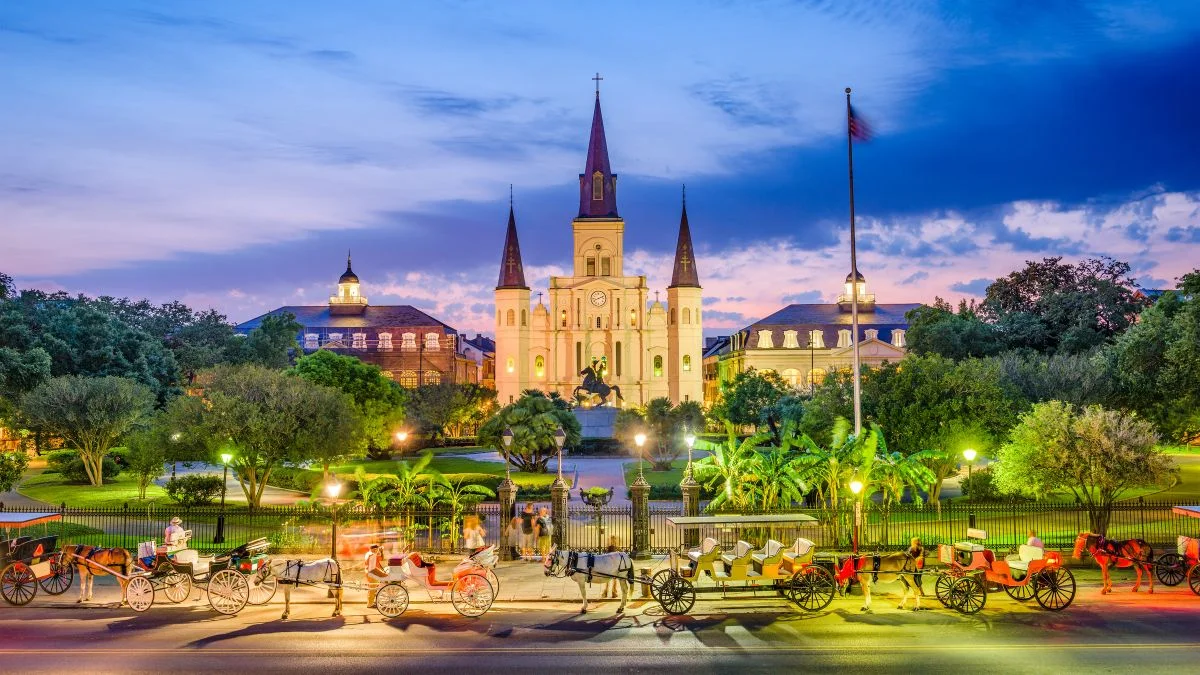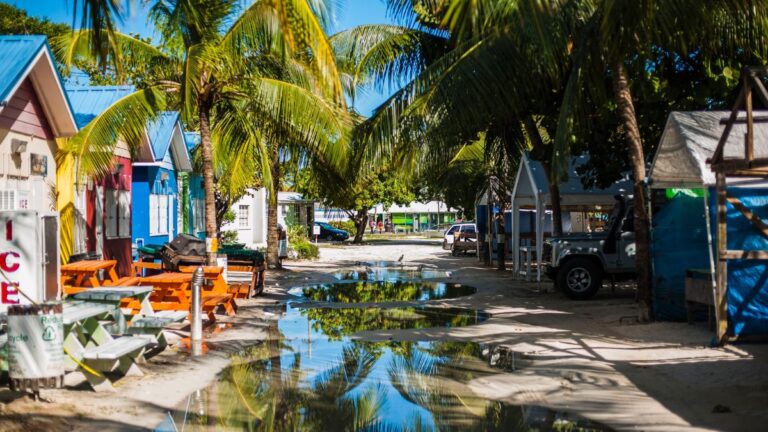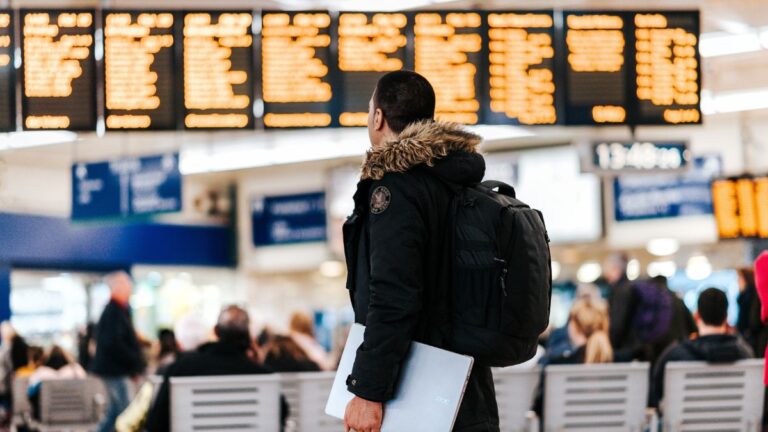Worst Time to Visit New Orleans: Mardi Gras Mania and Hurricane Seasons

As participants in Amazon Associates and other programs, we earn from qualifying purchases. This comes at no additional cost to you. For more details, see our Affiliate Disclosure.
New Orleans, a city draped in a vibrant tapestry of French, African, and Southern culture, is an enthralling destination year-round. Yet, there are times when the Big Easy doesn’t quite live up to its moniker. When the streets become a stage for the dizzying euphoria of Mardi Gras or the city braces for the tumultuous hurricane season, visitors may find themselves facing more chaos than charm. This article delves into the periods that could contend for the title of the worst time to visit New Orleans, where the pulsing energy of festivals and the unpredictability of Mother Nature can turn a dream vacation into something a bit more challenging.
Mardi Gras Mayhem: Beyond the Beads and Cheers
Mardi Gras in New Orleans is renowned worldwide for its riotous display of color, round-the-clock parades, and an ever-lasting party atmosphere. But there’s a side to the festivities that doesn’t make it onto the glossy postcards. When the vibrant floats have passed and the music fades, the streets tell tales of excess and exhaustion. For the uninitiated, the relentless revelry turns the French Quarter and surrounding areas into an almost impenetrable mass of humanity. From Bourbon Street to St. Charles Avenue, navigating through the thick crowds can become an odyssey of its own. Tales of pickpockets and lost belongings often overshadow the stories of spontaneous dances and shared laughter.
Moreover, the influx of visitors drives accommodation prices to sky-high rates, with hotel rooms and Airbnbs booked out months in advance. For locals, the season is a double-edged sword; businesses boom, but daily life is disrupted. Traffic snarls become the norm, and for emergency services, the period is one of high alert. The environmental impact is also a concern, with post-festivity cleanups revealing tons of waste—a testament to the downside of the merrymaking. Even as the city prides itself on the boost to the economy, there’s a growing dialogue about sustainable tourism and the quality of life for residents.
- Navigating the Crowds: Visitors are advised to plan their routes in advance, stay vigilant, and be patient. The sea of people can be overwhelming, so it’s important to remain aware of personal space and belongings.
- Accommodation Tips: Book early, consider alternative neighborhoods for staying, and be prepared for high prices. Looking into guesthouses or hostels could also offer a more authentic and cost-effective experience.
- Responsible Revelry: Participate in the festivities conscientiously, disposing of waste properly, and respecting the city’s infrastructure and local community.
Hurricane Season Hazards: Weathering the Storm
New Orleans’ hurricane season, stretching from June to November, brings a palpable shift in the city’s atmosphere. While the threat of hurricanes is a reality for any Gulf Coast city, the Big Easy’s unique geography, below sea level and surrounded by water, makes it particularly vulnerable. Visitors dreaming of jazz-filled nights and culinary delights may instead find themselves facing evacuation orders and severe weather warnings. The memories of Hurricane Katrina still linger in the city’s collective memory, serving as a somber reminder of nature’s power. During this period, the skies can quickly turn from clear to threatening, with the potential for damaging winds, torrential rains, and life-threatening floods.
Preparing for a trip to New Orleans during this time requires vigilance and a willingness to change plans at a moment’s notice. Tourists are encouraged to monitor weather forecasts closely, subscribe to local emergency alerts, and understand the city’s evacuation routes. The sudden shift from a tourist-friendly destination to an area in preparation mode can be jarring. However, city and state officials often have well-structured emergency responses, given their experience with such events. For visitors who find themselves caught in a storm, it’s essential to follow all guidance from local authorities, including any curfews and restrictions.
- Staying Informed: It’s crucial to keep track of the latest weather updates from the National Hurricane Center and local news outlets during your stay.
- Emergency Preparedness: Familiarize yourself with the location of the nearest shelter, pack an emergency kit, and have an evacuation plan, just in case the weather takes a turn for the worse.
Overcrowded Ordeals: Navigating the Festive Frenzy
The pulsating heart of New Orleans’ festivals can sometimes skip a beat under the pressure of overcrowding. Mardi Gras and other peak times see the city’s streets brimming with eager participants, which can overwhelm the city’s infrastructure and its visitors. The charm of tightly-packed crowds shouting for beads can quickly diminish when one finds themselves shoulder to shoulder with thousands, navigating through the throngs can become a test of patience and endurance. Public transport becomes packed, sidewalks are hard to traverse, and even a simple trip to a cafe or restroom can become a half-hour endeavor. The festive frenzy, while exhilarating for some, can prove to be a logistical nightmare for others, particularly for those not fond of tight spaces or large crowds.
The impact of such massive gatherings isn’t limited to personal space but also extends to the overall experience of the city. Attractions that are normally accessible might have long wait times or be closed to the public, and the ability to enjoy the city’s famed culinary and music scenes can be hampered by the sheer number of people. Moreover, locals who know their city well navigate these high seasons with practiced ease, leaving tourists to contend with the chaos. Those looking for the quieter, more intimate side of New Orleans culture may find themselves out of luck during these bustling periods.
- Strategic Sightseeing: Plan to visit popular sites early in the morning or on weekdays to avoid the largest crowds. Consider using a tour company that can provide skip-the-line access.
- Local Insights: Engage with local communities online before your trip to get tips on how to experience the city like a local, even during its busiest times.
Surge Pricing and Scarcity: Accommodation Woes
The vibrant allure of New Orleans’ peak seasons can quickly lose its sheen when faced with the reality of surge pricing and accommodation scarcity. As hotels, inns, and even short-term rental homes near the epicenter of festivities fill up, prices soar, sometimes reaching several times their off-peak rates. This surge pricing reflects basic supply and demand but can catch unprepared visitors off guard. For many, the dream of enjoying the city’s festivities is overshadowed by the sticker shock of lodging costs. Planning a stay during Mardi Gras or jazz festival seasons becomes a race against time and budget, with the best-valued spots being snapped up months in advance.
The scarcity doesn’t stop at pricing. Even for those willing to splurge, finding a place to rest can be as challenging as navigating the crowded streets. During Mardi Gras, for instance, it’s not uncommon for accommodations to be booked a year in advance, leaving latecomers with few options. This overflow often pushes tourists to outskirts of the city, requiring them to commute and potentially missing out on impromptu street celebrations that are the lifeblood of New Orleans’ cultural festivities. Beyond the inconvenience, the distance can also pose safety concerns, especially when returning from late-night events.
- Early Reservations: To secure accommodation within a reasonable price range, book as early as possible. Sign up for alerts from hotels and rental platforms to get notified about openings.
- Alternative Accommodations: Consider less conventional lodging options such as hostels, university dorms during summer, or staying with locals through homestay programs to circumvent the surge in traditional venues.
Cultural Celebrations vs. Tourist Traps: When to Steer Clear
New Orleans’ vibrant cultural celebrations are a major draw for tourists worldwide, but distinguishing authentic festivities from tourist traps can be a challenge. The genuine cultural exchanges that can be found during events like jazz nights at local bars and smaller neighborhood parades are often diluted during peak seasons when businesses cater to out-of-towners. During these times, what was once an intimate gathering may turn into a commodified experience, with authenticity taking a backseat to profitability. For the discerning traveler looking to capture the true essence of New Orleans’ culture, it is crucial to identify when a celebration has tipped the scale from a local tradition to a tourist spectacle.
There’s a delicate balance between participating in cultural events and avoiding over-commercialized versions that may not provide the genuine connection to the local community many seek. Certain times of the year, such as during Mardi Gras or the Jazz Fest, can see an influx of pop-up vendors and tour operators promising an “authentic” New Orleans experience that may fall short of expectations. To truly appreciate the rich tapestry of New Orleans’ culture, it may be worth visiting during the shoulder seasons, when smaller scale events offer a more authentic atmosphere and a chance to engage with the community on a personal level.
- Research Local Events: Look into community calendars for events that are more likely to be attended by locals. Often these will be smaller but richer in cultural significance.
- Connect with Locals: Utilize social media or travel forums to get recommendations from New Orleans residents on the most authentic experiences during your visit. They can often tell you which events have remained true to their roots and which have become overly touristy.






